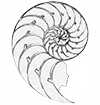June 1, 2015
The last two episodes of Outlander season one have created a lot of buzz for the boundaries it pushes with its storyline of rape & torture of a male hero. As a trauma-healing-geek (one who is passionate for creating transformation), there are so many interesting things to notice about how the story handles trauma.
1. Honor and love made Jamie override his fight/flight impulses. When Jamie gives his word that he will surrender to Black Jack Randall, he is consciously suppressing what his body wants to do – get away. Beyond the desire to do damage to Randall, his body would’ve have had impulses to at least jerk away from threat. Most of us would not be able to override these impulses, which would come from our brain stem and not be too concerned with what the cognitive centers had to say. It would take a very strong freeze response to pull that off.

2. Jamie would have been in shock. Speaking of the freeze response, let’s start with the nail. After ignoring the impulses to snatch his (already injured) hand away, once the hammer comes down, his body would start to go into shock. Shock is a blessing for trauma because it buys your body time to survive until help can arrive. The heart rate and breathing slow and the body releases an analgesic that numbs the pain. The moment would take on an otherworldly feel, and he probably would not remember most of it in a clear way. This is not a state that the body can maintain for long periods, but it is there for emergencies.
3. After the rescue, Jamie must come out of shock. Once the body gets the signal that it is safe enough, it will want to come out of shock and freeze. Jamie is rescued by trusted others – his godfather, Murtaugh, Claire, and his MacKenzie kinsmen. They get him warm, bring him to a safe place to lie down, and attend to his most serious wounds. At this point, we would expect his body to shiver intensely – not just to get warm, but to discharge the energy and chemicals involved in freeze & shock. (It’s important to let that happen without trying to stop it.)
4. Jamie is traumatized on many levels. It’s not just the physical and sexual aspects of the ordeal that are traumatizing. Randall sets out to break Jamie’s spirit, and to do so he uses every weapon available to get underneath all of Jamie’s defenses. After the rescue, Jamie would be dealing with physical, emotional, mental and spiritual aspects of trauma – all of which are likely to contribute to PTSD symptoms (flashbacks, nightmares, panic, etc.). Many boundaries were violated and must be repaired for healing.
5. Claire goes “into the dark” with Jamie to pull him out of his trauma state. Fortunately, there are less dramatic and more gentle ways of helping someone recover from an intensely traumatic event (but it does make for exciting television!) Trauma researcher Dr. Bessell van der Kolk found that the part of the brain that tracks time moving ahead can get stuck in the time of the trauma. Helping Jamie recover required resetting the brain, returning to the here-and-now, and assuring his nervous system that the event is in the past. This helps turn off physiological signals that are perpetually attuned to a threat that is no longer physically present.
6. Jamie has to get back his fighting spirit. Another important phase of healing is when Jamie gets back in touch with his suppressed fight & flight responses (read: aggression & rage). If Jamie doesn’t reconnect with these impulses, they might not be readily available the next time he finds himself in a tight spot. It would also mean that those impulses were locked in a freeze state, which takes a lot of the body’s resources to maintain (and can take a toll on health over time). Connecting to his defensive responses also helped him come out of his collapsed, suicidal state and got his life energy moving again. In real life, it’s important to do this slowly so that the system doesn’t get overwhelmed. (And sometimes one’s partner isn’t the best candidate to do this – find a trained Somatic Experiencing therapist for this job!)
7. The best thing Claire does is stay connected and supportive. Healing from a life-altering, traumatic event does not happen over night, and that’s one of the things I love about how Diana Gabaldon writes it – Jamie will continue to feel the effects from this for many years. Over time, we see Claire continue to support his recovery. She doesn’t press him to talk, lets him disconnect when he needs to, and holds him when he reaches for her. No matter what is coming up, she stays persistently connected to him and holds space with him until he’s ready to reengage.
What I hope you’re getting from this is that a big part of trauma is the fact that the body’s survival mechanisms got overwhelmed and must be reset. The story is only one piece of the puzzle. If you know someone who is struggling to recover from trauma, they may want to know that if they work with the physiological symptoms first, the story, emotions and other aspects are vastly easier to deal with. Check out Waking the Tiger, by Peter Levine, for more details, or see my website: brandyvanderheiden.com
Thanks for reading!
Brandy
P.S. Deep gratitude to Sam, Tobias and Catriona for the work they did all season long for their art and our enjoyment. To some degree, to get that level of feeling, the physiology has to believe what’s happening, and it can take a physical, mental and emotional toll. Hope they get good rejuvenation during the break.



